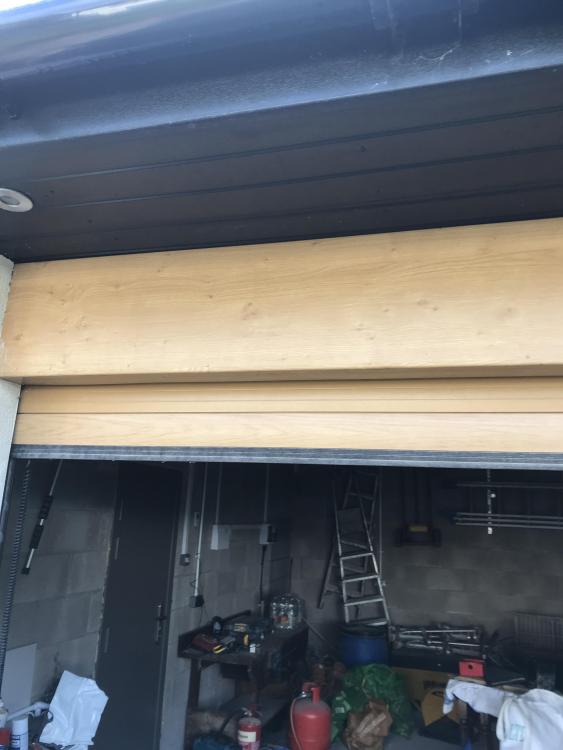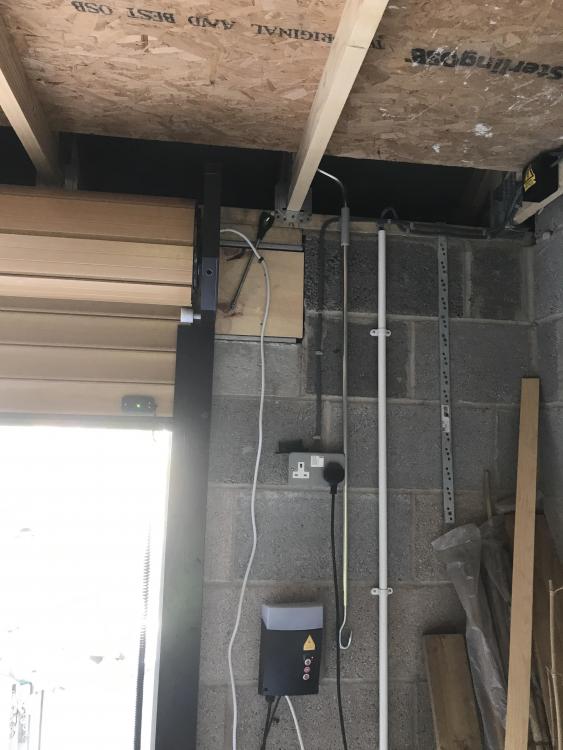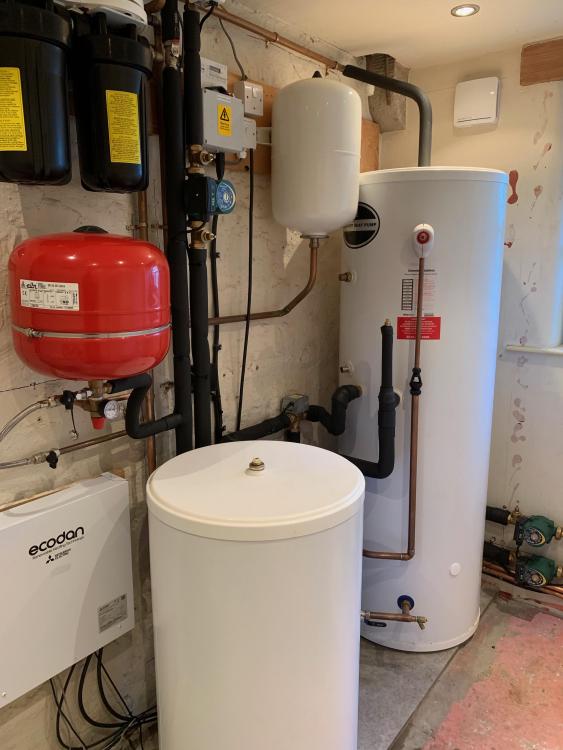Leaderboard
Popular Content
Showing content with the highest reputation on 09/19/19 in all areas
-
Hi folks. As a moderator on this forum, I'm not exactly over the moon to see how this is going so far. Hi @Laith J. As an introduction, that was a little short and uninformative. That is what has provoked some replies. An explanation that you'd heard that this was a good / interactive information source would have been useful in your first post. Residence here is a privilege, not an assumption, so we keep this ship 'Bristol fashion' at all times, as I hope you appreciate. Lets leave any assumptions out until it's appropriate to comment otherwise please . All new members are screened before being allowed to join, and are pointed at our T's & C's whenever necessary. +1. Feel free to contribute and ask questions. If you need to check what's acceptable and what's not, drop me a PM and I'll be happy to help. wind....sailing....close..... Back to work everybody !!5 points
-
Good points. The US electrical system has some features that make it safer than the UK system, and lots of features that make it less safe (IMHO). The 180 deg bi-phase 240V LV supply system, with N/PE at mid-line potential, is a plus, as the maximum potential between any line and ground is 120 VAC. The radial wiring system that's universal in the US is also plus point, in my view. However, the really. really crap design of US plugs, the complete absence of fuse protection on appliance supply leads and the near-total absence of protective earthing, together with the absence of switches on power outlets, are all serious flaws. Arcs are far more likely in US wiring schemes, as the absence of outlet switches, means that the probability of plugs being removed under load is high. This pretty much always generates a disconnection arc, and a look around pretty much any US outlet will show marks where this has already happened. Fitting snap action switches would probably remove the risk of most disconnection arcs on US installations.2 points
-
Get it approved first, then reflect.2 points
-
Hi All, We registered on this forum as we are having a baby soon - We're starting a project to repurpose some space from an open plane kitchen/living area to create an additional spare bedroom. We will basically need a new wall stud-wall and door. I created a new thread here. Hoping we can have some useful suggestions regarding how to go with building regulation requirements ? Thank you all in Advance! Xx2 points
-
I frequently come across burned out switches. The usual culprits are 20A switches or worse, FCU's used to switch an immersion heater. One I did recently the switch had burned out to the point of making a black hole in the front plate and inside the mechanism had completely crumbled to bits, but the plastic back box it was in was not even charred. I suppose this is what we must expect of the organisation that decided the "solution" to CU fires was to put the CU in a steel box. I always argued the solution should have been to take a long hard look at WHY CU fires happen and try to improve design, like go back to the old fashioned idea of 2 screws on all terminals, and mandate that if you are going to use cage clamp terminals, you design them such that it is physically impossible to put the busbar finger the wrong side of the cage clamp. But no, we have not changed the design to stop a fire, just done something to try and contain it. And soon you will have to fit one of these expensive devices to detect the fault. What is the betting these AFDD devices will still have a cage clamp terminal that has nothing to stop you inserting the cable or busbar on the wrong side?2 points
-
Painting commenced on 6th March and was finished about two weeks ago. I heavily underestimated the time this would take. By about 4 months. White everywhere so it was hard to tell where we were at after the first two coats. Our favourite whiteboard "spreadsheet" tracked progress and filling it in gave great joy.1 point
-
1 point
-
1 point
-
Glad to have been of help, it was just lucky I have the identical manifold.1 point
-
Thanks. Found the issue. Flow and return piped incorrectly on mixer... see my response to ProDave. thanks for your help Team DIY.1 point
-
Spot on. I have just removed the mixing valve and the pump to learn that the plumber installed the boiler flow into the boiler return... so annoyed. I have been battling with this issue for ages and was assured on numerous times it had been done correctly. The indicators are on the bottom of the valve so without removing it, t’was hard to see. thanks for your help. I now somehow have to reconfigure the pipes which is going to look super untidy.1 point
-
+1 to check the pump direction. I looked at the manual but it's not clear. The drawing that shows the permitted installation orientation suggests it might be installed pumping downwards by mistake. However if that was the case I don't think the flow meters would work?1 point
-
I wonder how much this is all botty covering. If there's a prominent fatal fire caused by arcing the immediate question will be: why aren't AFDDs mandated the way they are for bedrooms in the US and Canada? Because they're expensive. Money before lives? Outrage. Etc. So then the question is, why are they mandated in bits of North America? And do any valid arguments there apply here with twice the voltage and half the current?1 point
-
1 point
-
1 point
-
They didn't. I suspect it was more to make people aware of the potential issue than to act as a calibrating standard. The main issue with typical metal tapes for me is that bit on the end that slides slightly to account for whether the end of the tape is being pushed into, or pulled away from, whatever's being measured. I just always assume there's a couple of mm error and try to make sure that an error of that magnitude doesn't impact what I'm doing. One example is where the absolute measurement isn't as critical as making sure it's replicated properly (ie, precision is more important than accuracy). An example would be making legs for a workbench. Best to cut all legs at once, or at least use the same physical template for each of them. Doesn't matter if they're all 5mm shorter or longer than the design (which is slightly arbitrary), as long as they're the same. There's something called a "story stick" in woodworking that's a nice development of this idea.1 point
-
Claim it back. And write your Planner a hand-written thank you letter (irrespective of the outcome). A balanced , but fair approach, I think.1 point
-
If the delay is due to understaffing, then the LA are expecting the end customer to take the hit - which is not on for a paid service. Until they see some pain (refunded fees) where is the motivation to improve the situation. When I worked as a grad SW developer, we were dependent on a US team completing their base work before we could build on top. Every release, the US team would release their code 2-3 weeks after the agreed date which screwed our schedule so we would work evenings, weekends and cancel holiday and training to keep to our dates. We were not allowed to add a 'late handover' buffer as the senior management reviewed all plans for such padding, however as the ball to customer never got dropped, there was no motivation to fix the issue (under resourced US team). After a few releases, our manager got fed up and when the next handover was two weeks late, he threw our plan out by two weeks which caused all sorts of chaos, warnings of penalties etc. but he stood his ground. Next release and everyone after that arrived to us bang on time - if it doesn't get broken it doesn't get fixed.1 point
-
Hi all, I've flicked through the forum pulling out useful information over the past couple of months as I've come across one issue or another with our build but I think it's time to seek more direct advice. For background my brother has bought an old bungalow in south Wales that we're converting in to a four bedroom, two bathroom, open plan, modern house. In time there will be an extension that goes where the single garage is now but that's a ways off. So far the demo work has been done, tearing out most of the ground floors internal walls. We've had the roof rebuilt with a full width back dormer to accommodate the upstairs bedrooms and bathroom. (All to structural engineering plans specifications and okayed by building control. We're not cowboying this.) These's are insulated, plaster-boarded, first fixed and currently being plastered. We're waiting on windows to be delivered to hopefully install those before winter hits. We've just finished underfloor heating downstairs and self-levelled over the top ready to take an engineered timber floor. As we've been living in the property everything has been done a bit piecemeal so a lot of jobs are half complete, which is a pain but the only way in some areas. Our experience with contractors has not been great, they haven't built to the quality that we'd expect to be standard and don't seem to think of future issues they're causing taking shortcuts. Not saying all contractors are like this, just our experience, but it has lead to us taking on most of the work ourselves. Anyway, I'm coming across some niggling questions; like the correct way to cap a disused soil vent and the correct material to put on a wall behind a wooden stove. But I'll find the relevant subs and post the questions there. Kind Regards, Matt1 point
-
Erwin Schrödinger's Switch, it is both On and Off. Or should that be @Onoff's Bathroom. It is both finished and unfinished.1 point
-
1 point
-
Failure indication is an art all to itself. There are several general rules pertaining to how failures should be indicated, the most common being that things should fail safe, and that means either switching off and waiting to be noticed, providing some sort of alert that something has gone awry, but doesn't require immediate attention, to something has gone awry and you need act immediately. In a domestic environment there aren't many failure modes that fall into the "you have to do something immediately" category. Fire alarms, and possibly flood alarms, are probably the only two that I can think of. A freezer failure is a lower category, as there is no need for immediate action if a freezer fails, there's usually an hour or two of leeway. Many MVHR systems have their own alarm/alert systems. Our's has an alert when the filter needs changing, but doesn't have an alert in the power fails, other than the display on the wall turning off (which is probably as good as anything). Some stuff is self-indicating mechanically, like MCB, RCBs and RCBOs - a glance at the panel shows if any have tripped (but not why, in the case of RCBOs). The problem with using indicator lights to show when something has failed is that the indicator lights themselves maybe as prone to failure as whatever they are indicating the status of. The best example I can think of are things like the caution and advisory panel lights on an aircraft. These light up a caption, and may also make a sound, whenever something goes out of limits or fails. The way the risk of the C & A lights themselves failing is mitigated is by having a push-to-test button that is exercised as a part of the pre-flight checks, and which illuminates all the C & A indicators. A more fail-safe indicator is the dolls eye used to show that oxygen is flowing to a mask. This device is spring loaded to the eye is closed with no flow, and only opens when there is flow. If there is a leak in the mask etc, then the eye opens all the time, if all is well the eye opens and closes with each breath. I'm inclined to think that a house really needs a range of different alert and alarm systems, each specific to the system. As above, temperature drop beyond a normal limit would be a sensible one for a fridge or freezer. Absence of airflow might be a good option for MVHR. Fire alarms need to work on a change of condition that is a fairly reliable indicator of fire, without giving false alarms, so rate of change of temperature is a good option for a kitchen, whereas a smoke detector is a better option for a hallway or landing. Finally. there's always the option of installing a home automation system and have that report the state of everything back to some device, or incorporate algorithms to do useful things, like turn off unused lights after a certain period of time, perhaps using occupancy sensing to determine when lighting is no longer needed.1 point
-
are the flow and return from the boiler reversed maybe?1 point
-
I'm with @ProDave on the useless design of terminals now. The older double screw terminals were way better, not just because they provided redundancy and more contact area, but also because they didn't deform the wire so badly. Gate clamps are a PITA in my view. Both because they have the ability for wires to be inserted but not clamped when the screw is tightened, but also because they often aren't very good at gripping bigger cables. I did an inadvertent experiment recently, when wiring some 25mm² tails to an isolator . I was wiring the panel on the bench, prior to fitting it in a box (just for easier access) and discovered that the 25mm² tails kept coming loose. It seems that the slightest bit of movement will tend to loosen off the clamping force, even after the screw has been torqued up to the right setting twice. It certainly makes a good case for tightly securing tails close to terminals so they cannot be wiggled to see if they are secure, as this wiggling seems enough to loosen them off slightly.1 point
-
Don't forget though, it was ruled that deliberately hiding a building does not then allow you to claim the 4 years use. Remember the case of the guy that built a castle hidden behind a stack of straw bales, then tried to claim a certificate of lawful development. It was ruled that because he deliberately concealed the building that period of use did not count.1 point
-
Ask @pocster, he knows a thing or two about cheap glazing.1 point
-
I reckon that cat would transform from a 15 W heat output one one to a 30 W version after a few weeks on munching on my mouse population...1 point
-
And we're done, all installed and working We've not had an oil boiler since May so glad it's in! use in time too by the looks of the news with the Saudi oil strikes. Great that we're fully pumped now and not on the horrible gravity fed system we had - so many air blockages previously! Now to try out the underfloor heating!1 point
-
Of all the risks I think the most likely to hit is the cloud service just packs up and shuts down leaving the smart device dumber than a dumb device. Latest example: https://www.theverge.com/2019/9/6/20853671/best-buy-connect-insignia-smart-plug-wifi-freezer-mobile-app-shutdown-november-61 point
-
I just got used to getting strange looks and comments from people working on our build. There's a very strong tendency to disapprove of anything new in the building industry, not for any good reason, just a seeming reluctance to accept change. We have had a few of the people who worked on our house back since it was finished, and every single one of them agreed that what we've done works OK, so perhaps that will go some way to try and get people to adapt to new methods of construction.1 point







.jpg.c21f3ac78c9b7efd90cbdcb312744dc5.thumb.jpg.7adcad4c0e384f5ecd7d56b0618df6e5.jpg)






